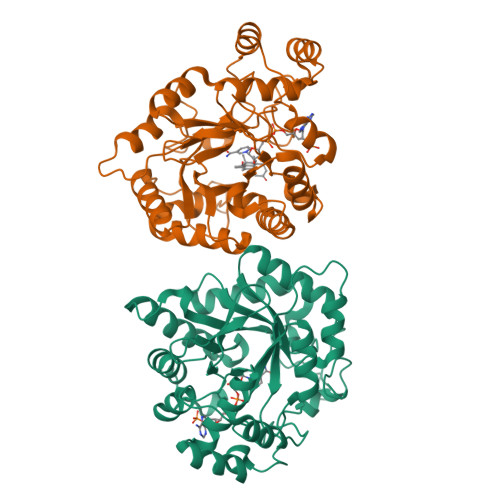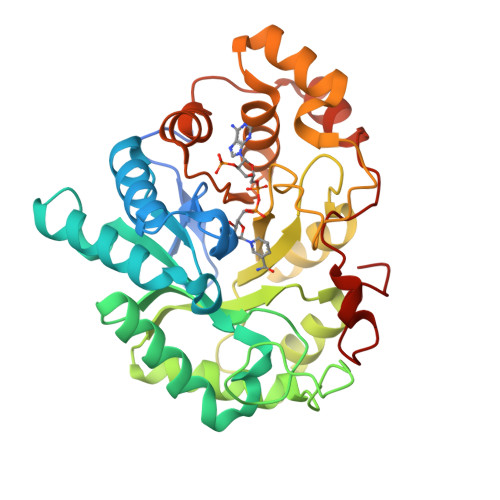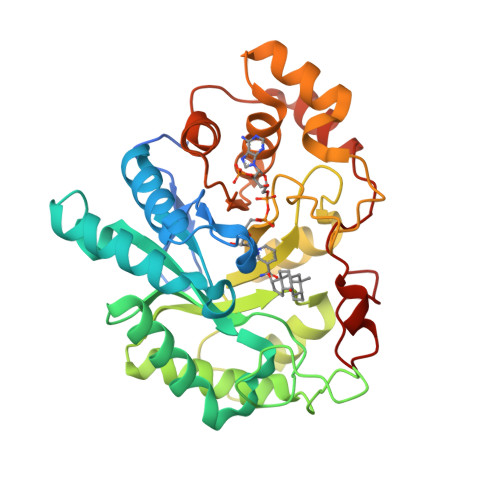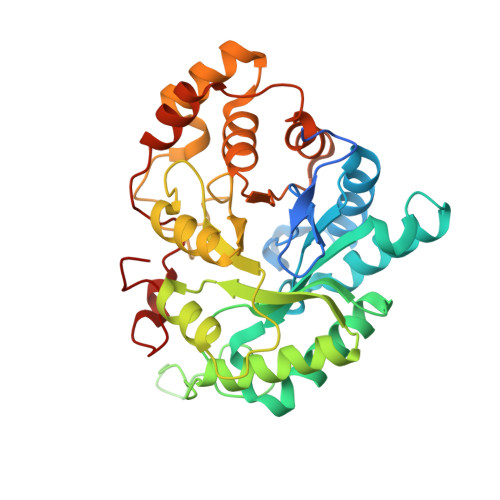Structure and catalytic mechanism of human steroid 5beta-reductase (AKR1D1)
Di Costanzo, L., Drury, J.E., Christianson, D.W., Penning, T.M.(2009) Mol Cell Endocrinol 301: 191-198
- PubMed: 18848863
- DOI: https://doi.org/10.1016/j.mce.2008.09.013
- Primary Citation of Related Structures:
3DOP - PubMed Abstract:
Human steroid 5beta-reductase (aldo-keto reductase (AKR) 1D1) catalyzes reduction of Delta(4)-ene double bonds in steroid hormones and bile acid precursors. We have reported the structures of an AKR1D1-NADP(+) binary complex, and AKR1D1-NADP(+)-cortisone, AKR1D1-NADP(+)-progesterone and AKR1D1-NADP(+)-testosterone ternary complexes at high resolutions. Recently, structures of AKR1D1-NADP(+)-5beta-dihydroprogesterone complexes showed that the product is bound unproductively. Two quite different mechanisms of steroid double bond reduction have since been proposed. However, site-directed mutagenesis supports only one mechanism. In this mechanism, the 4-pro-R hydride is transferred from the re-face of the nicotinamide ring to C5 of the steroid substrate. E120, a unique substitution in the AKR catalytic tetrad, permits a deeper penetration of the steroid substrate into the active site to promote optimal reactant positioning. It participates with Y58 to create a "superacidic" oxyanion hole for polarization of the C3 ketone. A role for K87 in the proton relay proposed using the AKR1D1-NADP(+)-5beta-dihydroprogesterone structure is not supported.
Organizational Affiliation:
Roy and Diana Vagelos Laboratories, Department of Chemistry, University of Pennsylvania, Philadelphia, PA 19104-6323, USA.



















